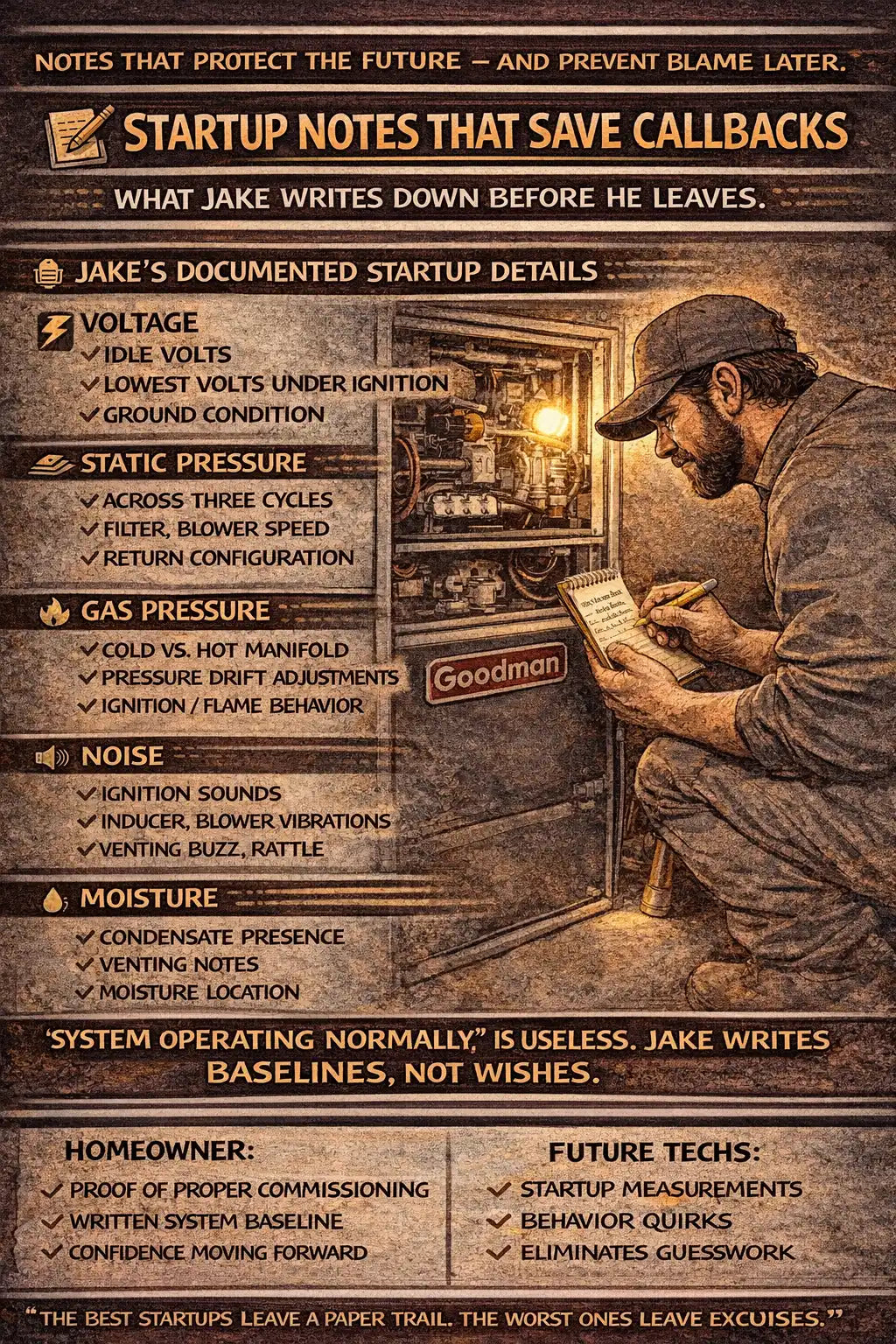HVAC Tips
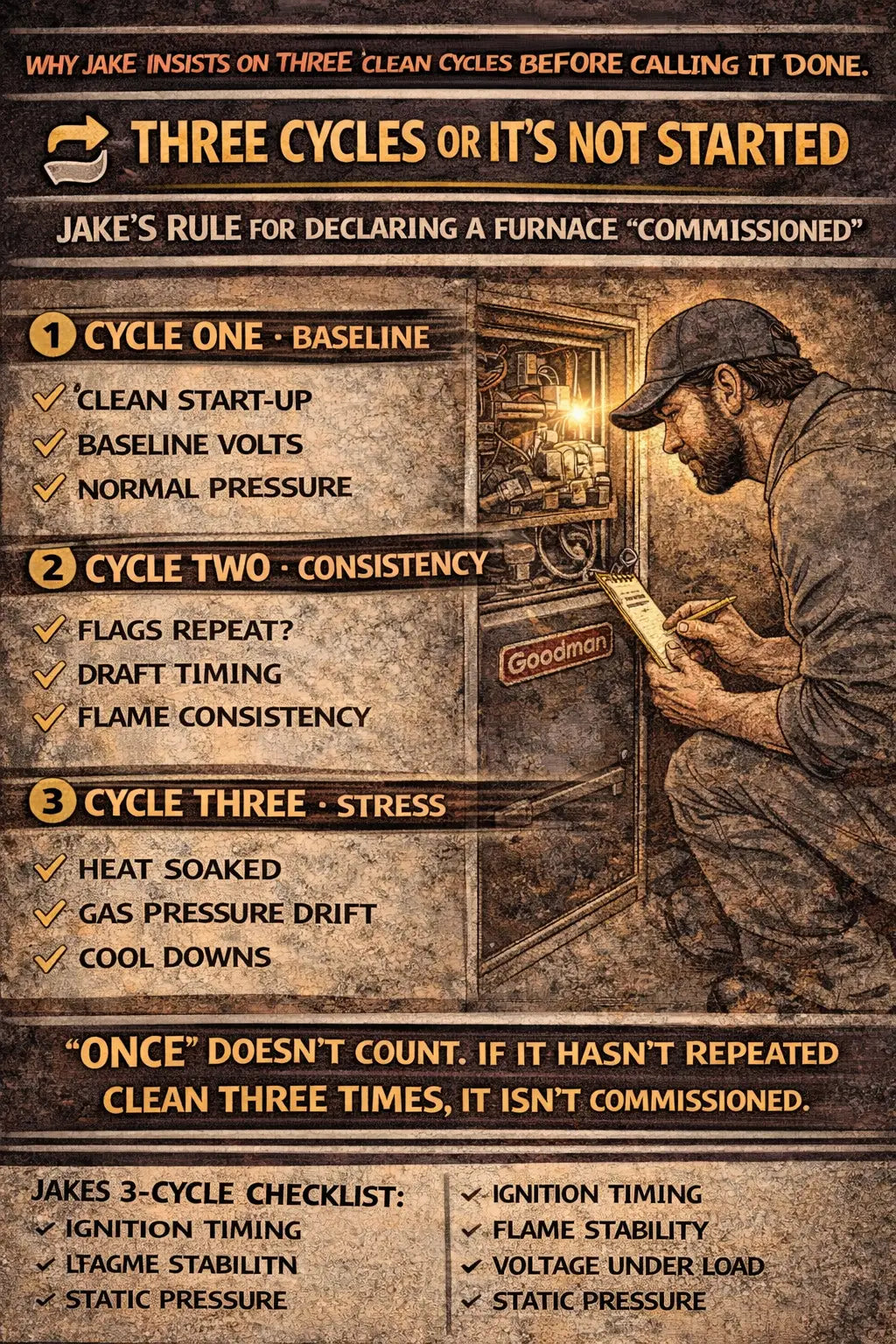
Three Cycles or It’s Not Started: Jake’s Rule for Declaring a Furnace ‘Commissioned’
Jake’s Rule for Declaring a Furnace “Commissioned”
Most furnaces are declared “done” after one successful run.
Jake doesn’t trust that.
Because one...
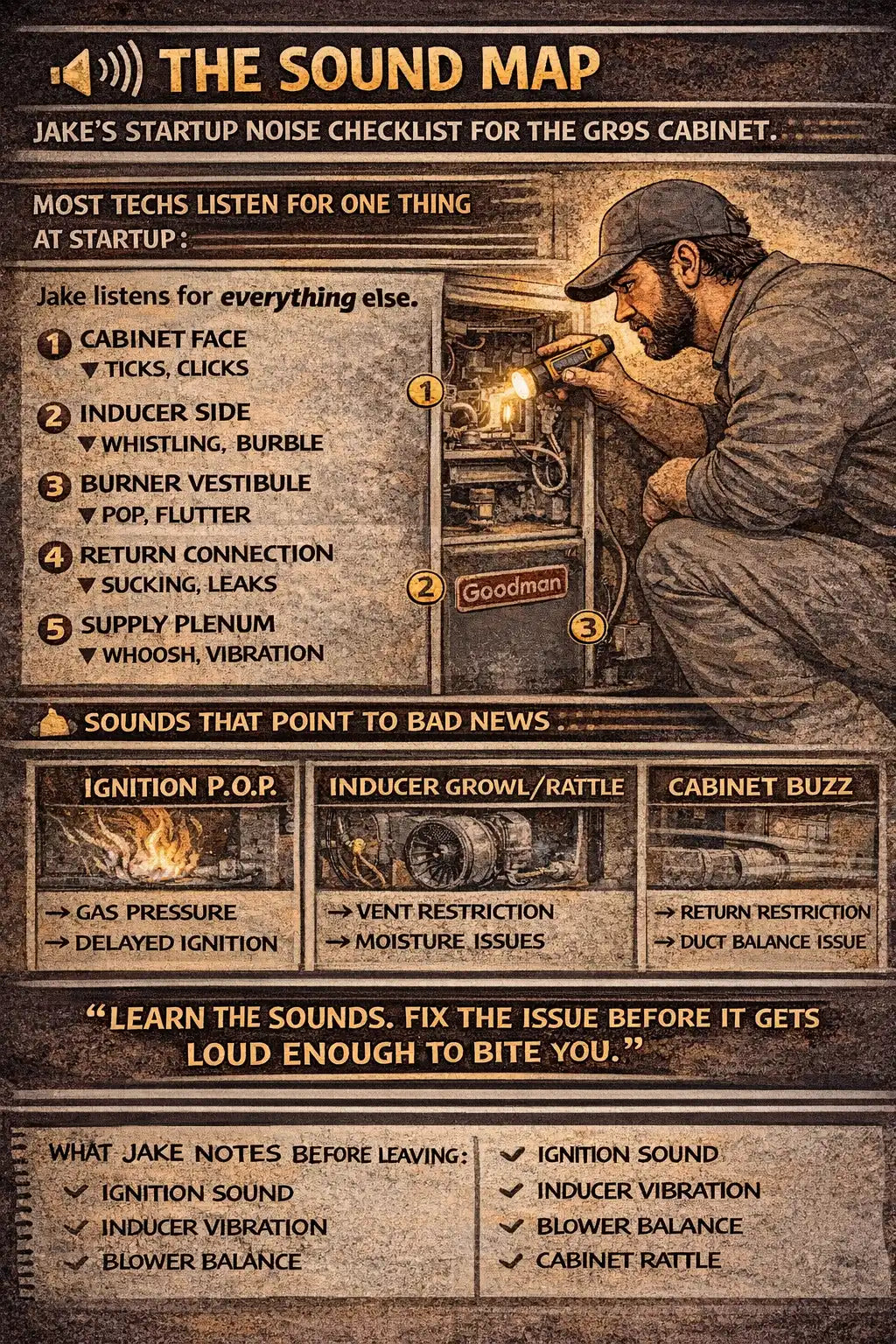
The Sound Map: Jake’s Startup Noise Checklist for the GR9S Cabinet
Most techs listen for one thing at startup:
“Is it loud?”
Jake listens for everything else.
Because furnaces don’t just make noise — they tell stor...
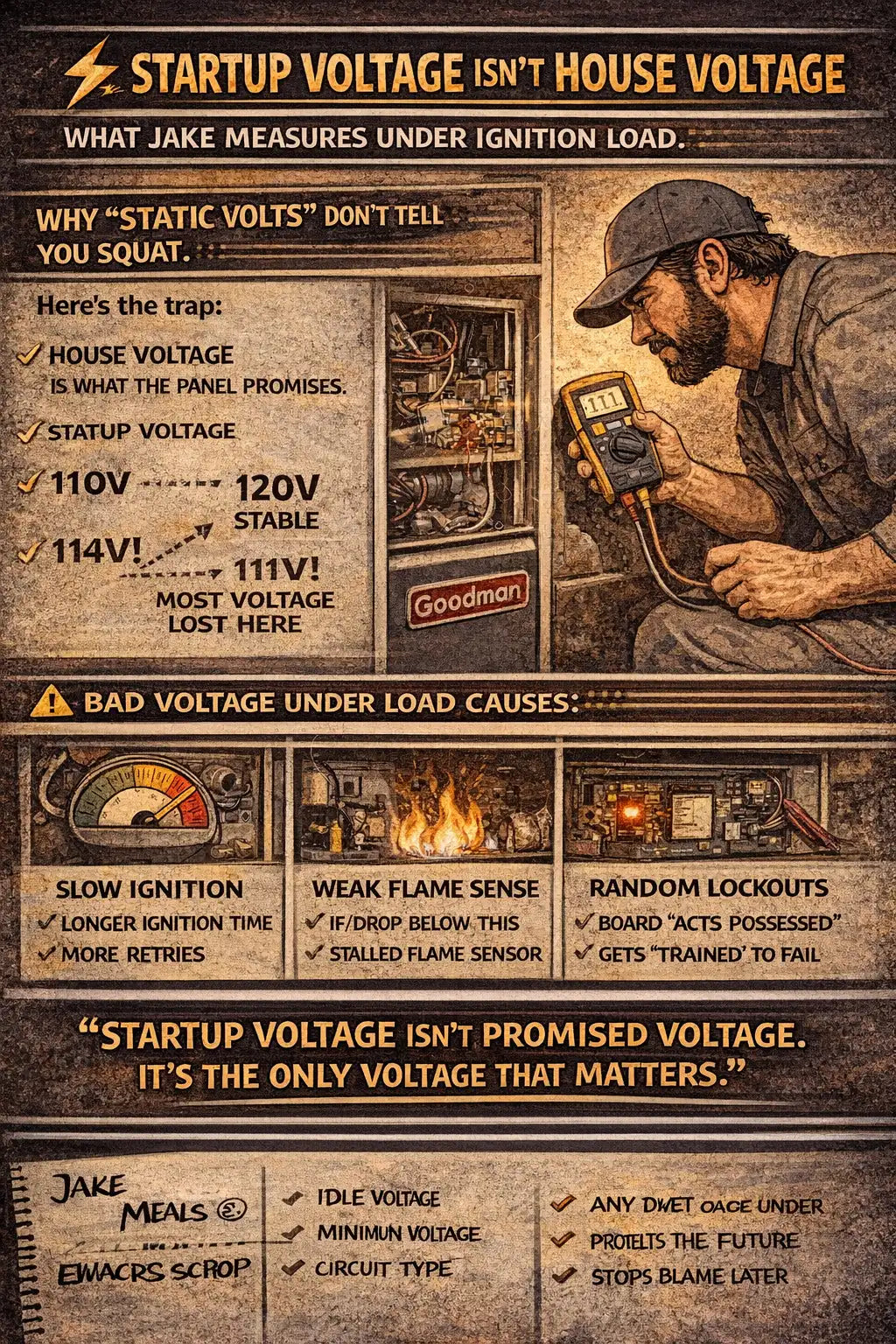
Startup Voltage Isn’t House Voltage: What Jake Measures Under Ignition Load
Most people think voltage is a yes-or-no question.
Is there power?Yes.Move on.
Jake knows that answer means nothing during startup.
Because house v...
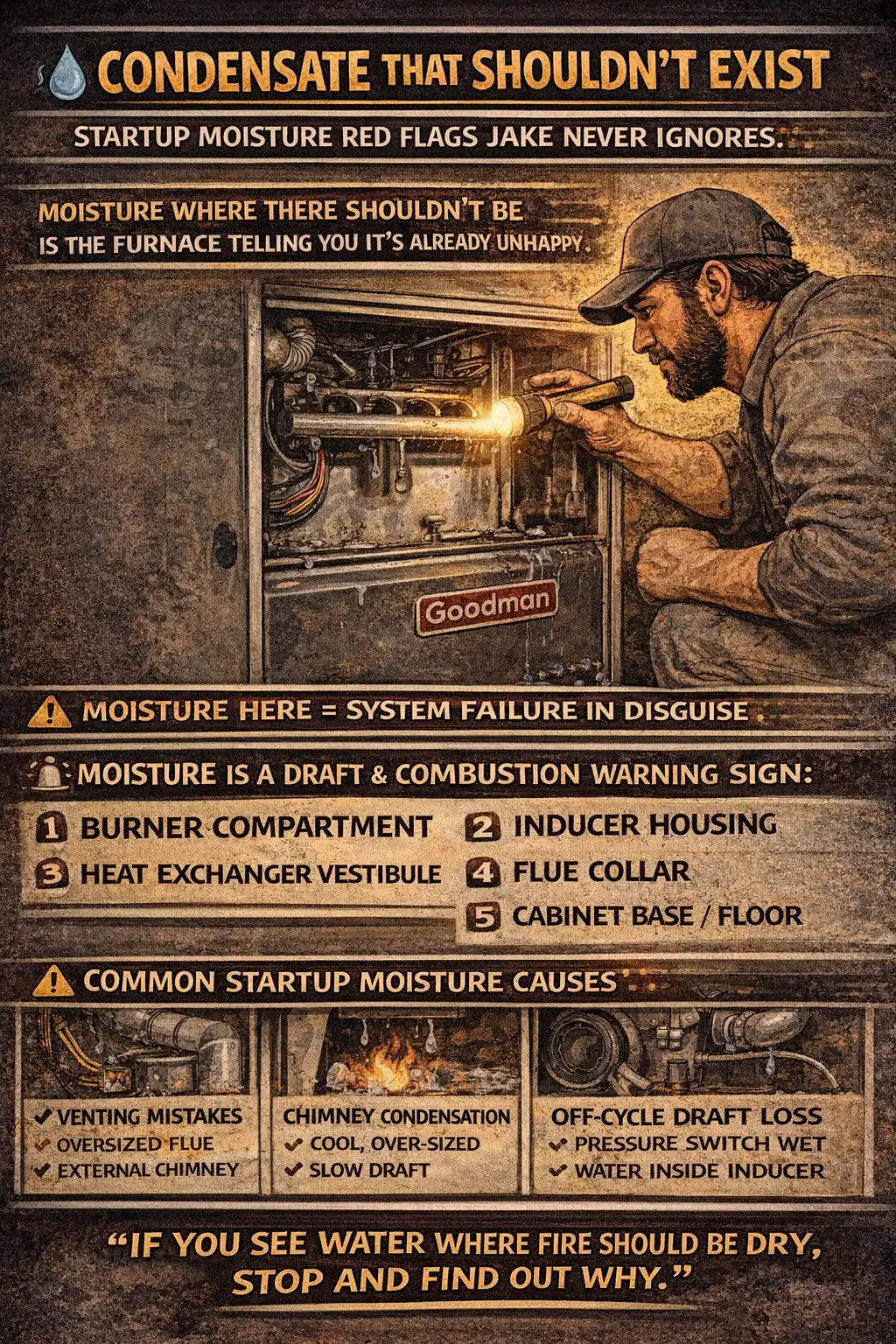
Condensate That Shouldn’t Exist: Startup Moisture Red Flags Jake Never Ignores
If a high-efficiency furnace makes water, nobody panics.It’s supposed to.
But when a non-condensing furnace shows moisture during startup?
Jake doe...

The Blower Delay Trap: How Startup Timing Masks Airflow Problems
If there’s one setting that lies better than bad static pressure, it’s blower delay.
Most installers think blower delay is about comfort.Jake knows...
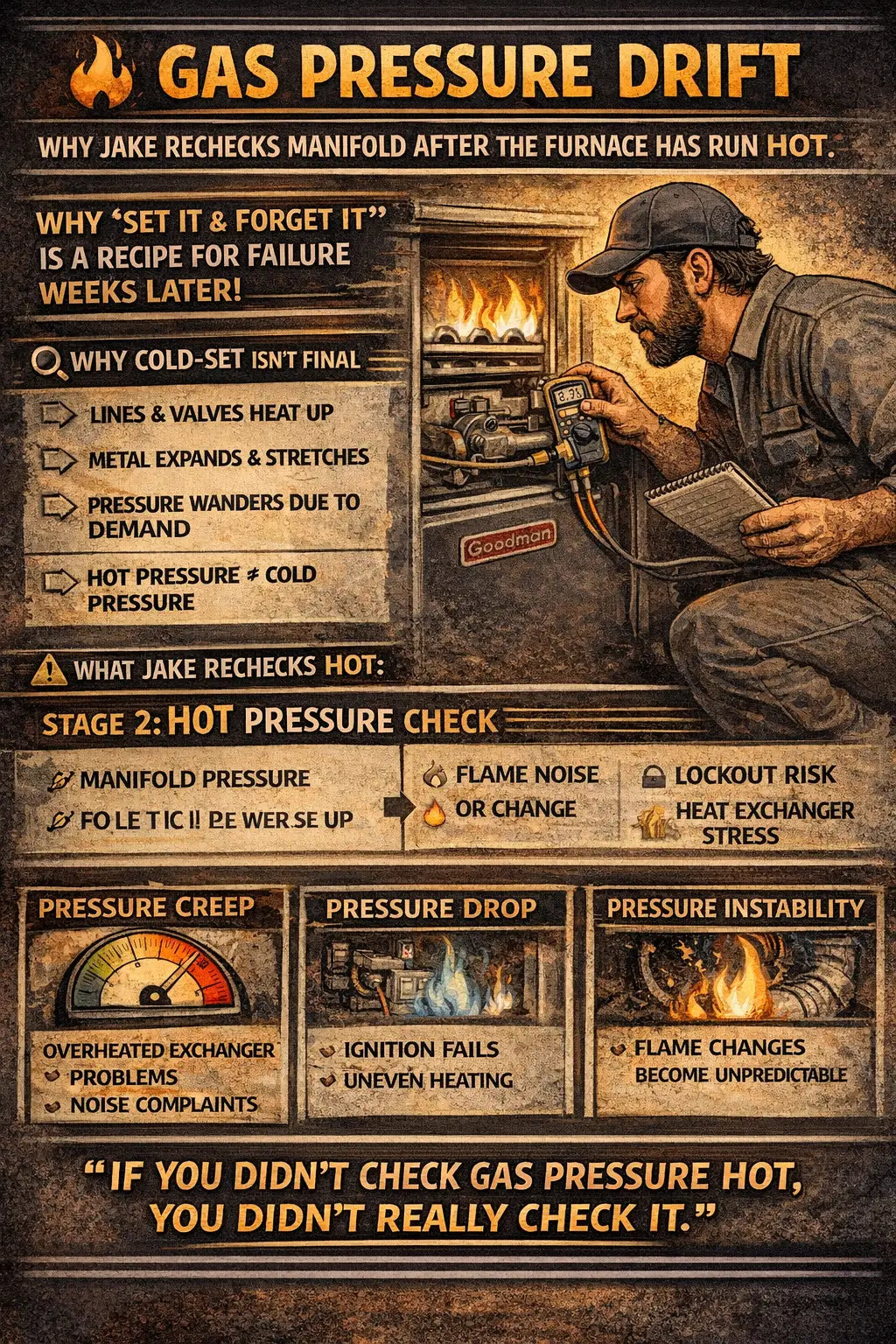
Gas Pressure Drift: Why Jake Rechecks Manifold After the Furnace Has Run Hot
Most installers set gas pressure once, tighten the cap, and walk away.
Jake doesn’t.
Because gas pressure doesn’t stay where you set it — it moves....
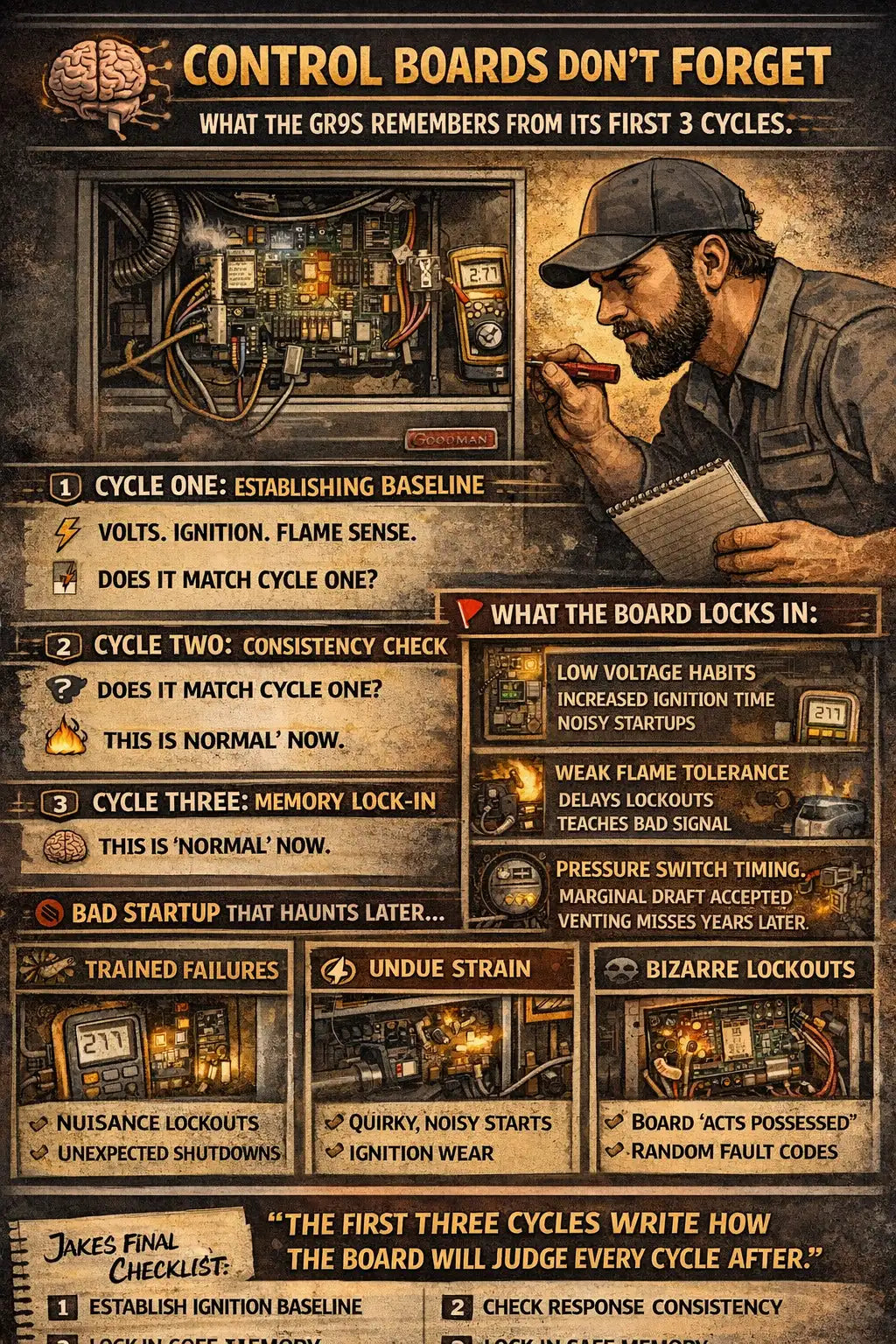
Control Boards Don’t Forget: What the GR9S Remembers From Its First 3 Cycles
A furnace doesn’t start fresh every time.
That’s the mistake most installers make.
They think the control board is just a referee — watching switch...
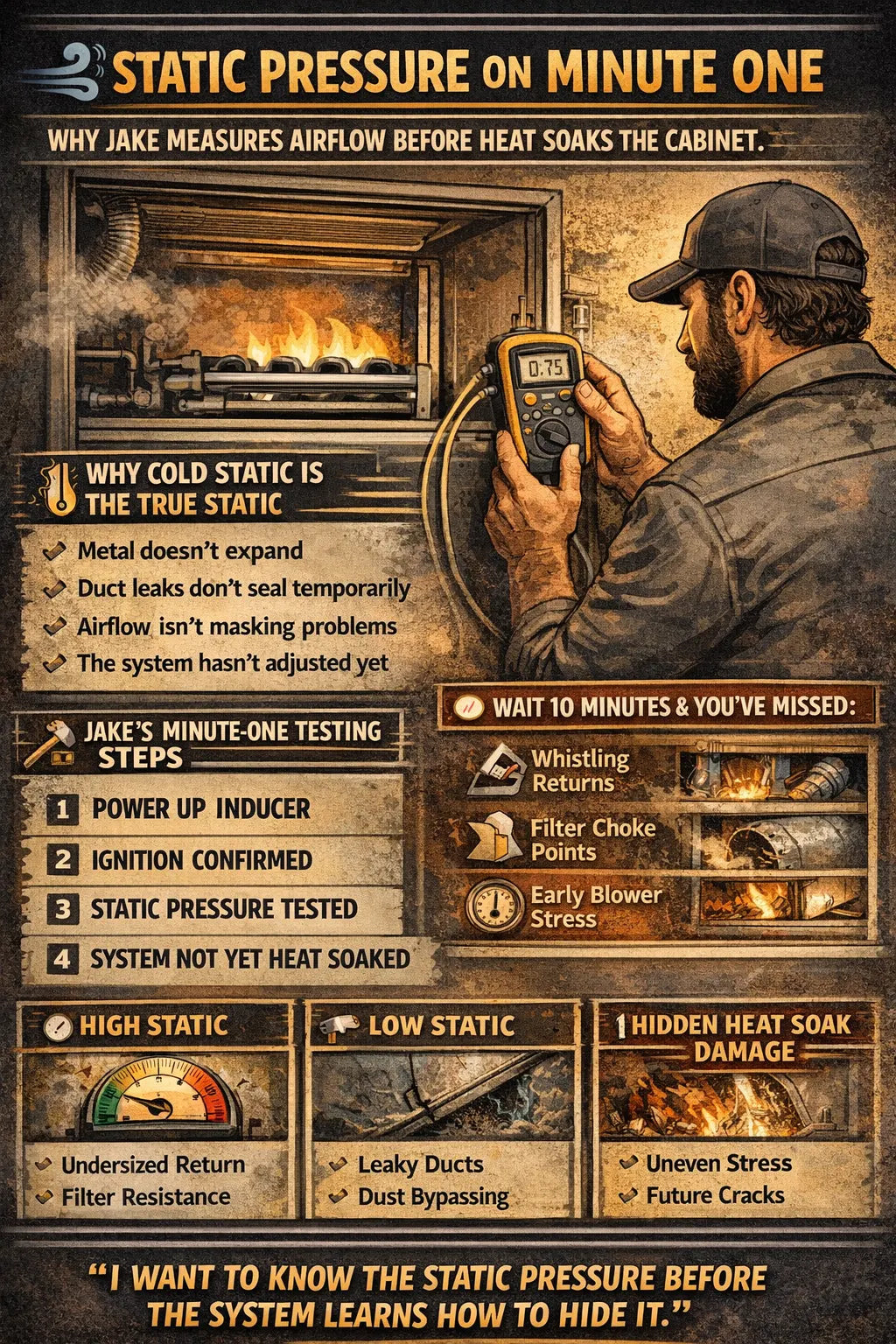
Static Pressure on Minute One: Why Jake Measures Airflow Before Heat Soaks the Cabinet
Most airflow problems don’t start loud.They start quiet — and they start early.
By the time a furnace has been running for ten minutes, the cabinet...
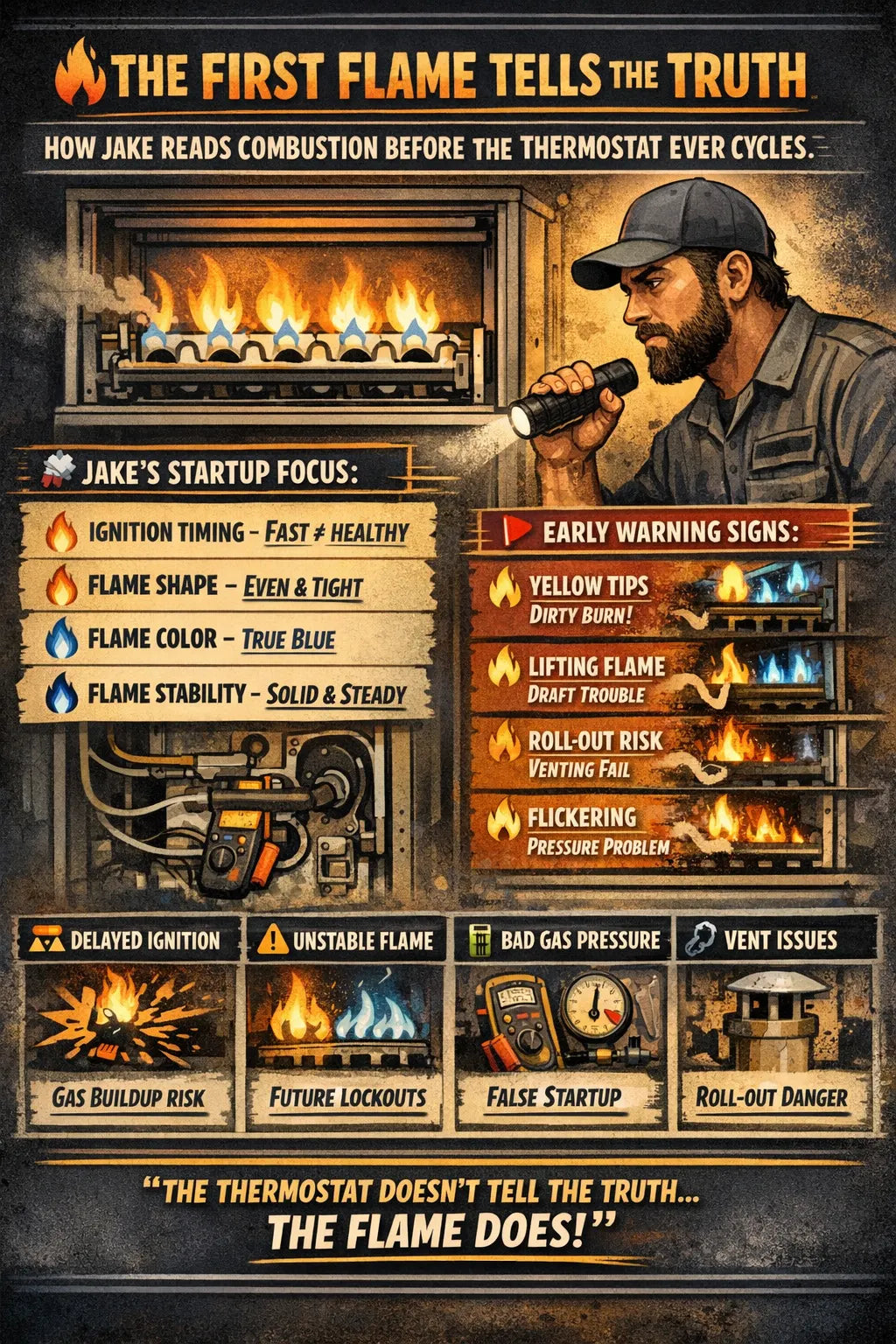
The First Flame Tells the Truth: How Jake Reads Combustion Before the Thermostat Ever Cycles
Most installers treat startup like a formality.Jake treats it like a crime scene.
Before the thermostat ever calls for a second cycle… before the b...

The 24-Hour Rule: What Jake Tells Homeowners to Watch After Startup
When I finish a startup, I don’t just pack up my tools and disappear.
I stop, look the homeowner in the eye, and say something that surprises a lot...
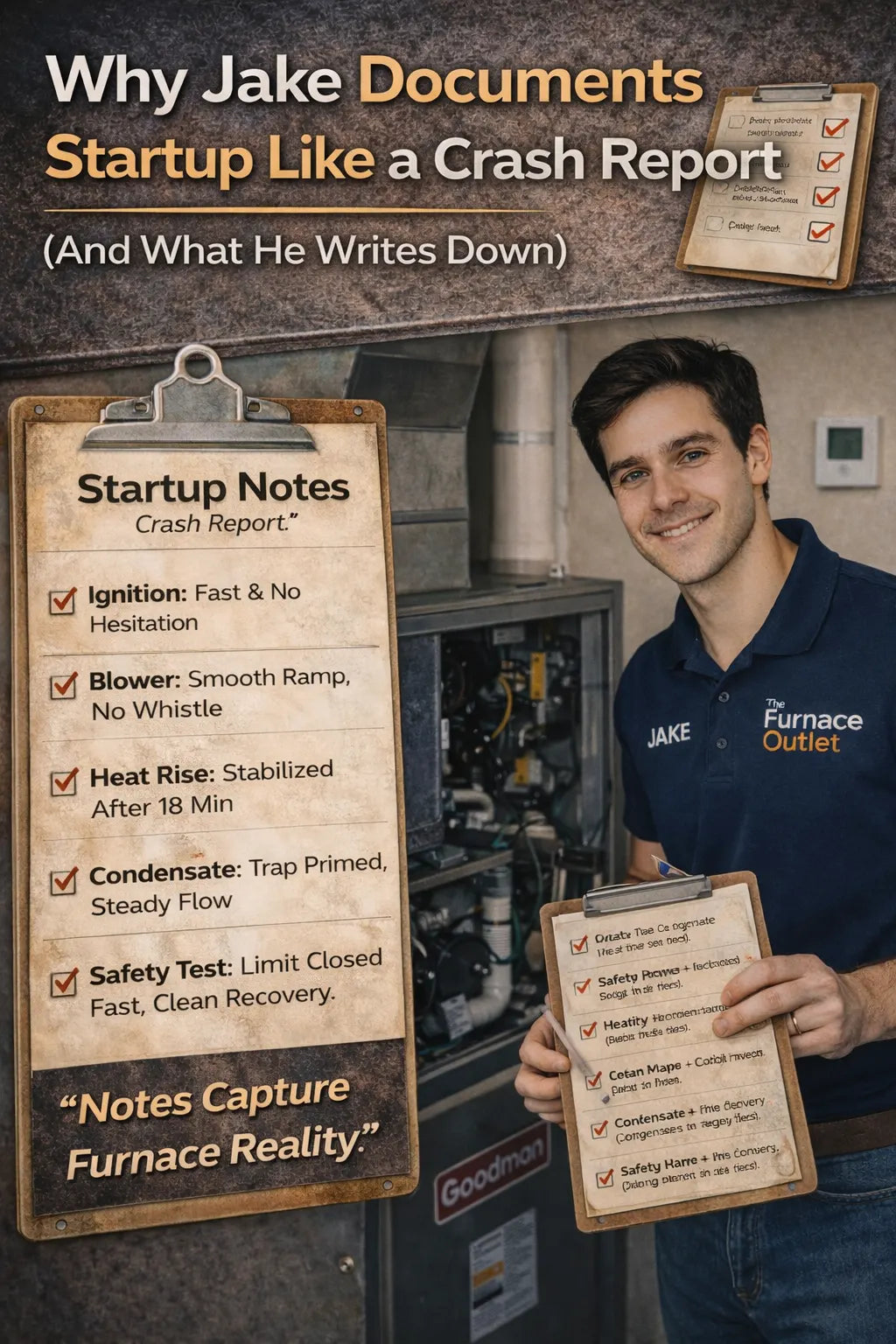
Why Jake Documents Startup Like a Crash Report (And What He Writes Down)
Most installers treat startup documentation like a receipt.
Model number.Serial number.Gas pressure.Done.
I document startup like an aircraft crash...
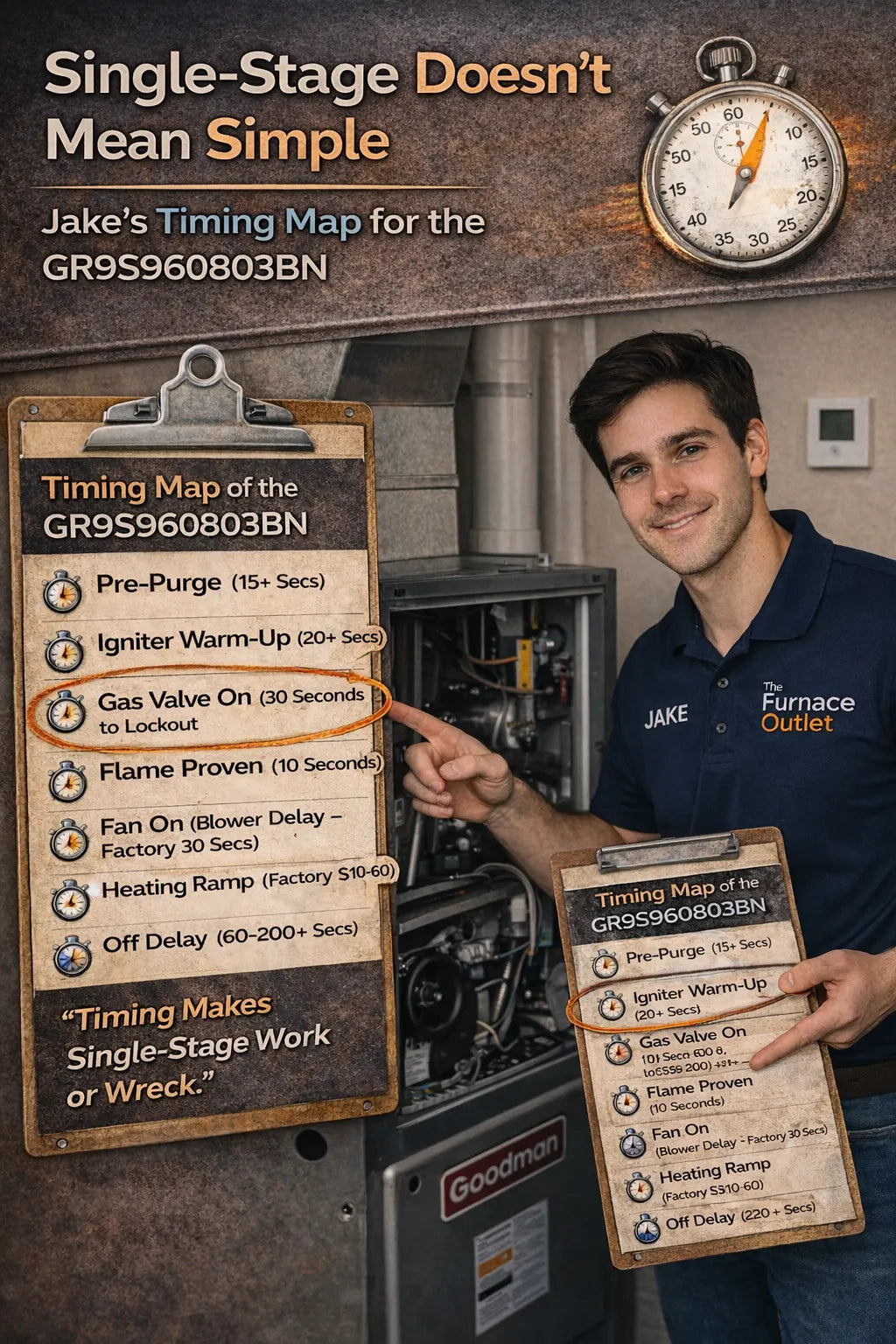
Single-Stage Doesn’t Mean Simple: Jake’s Timing Map for the GR9S960803BN
Single-stage furnaces get a bad reputation.
People hear single-stage and think:
On or off
Dumb logic
Nothing to tune
Nothing to mess up
T...

